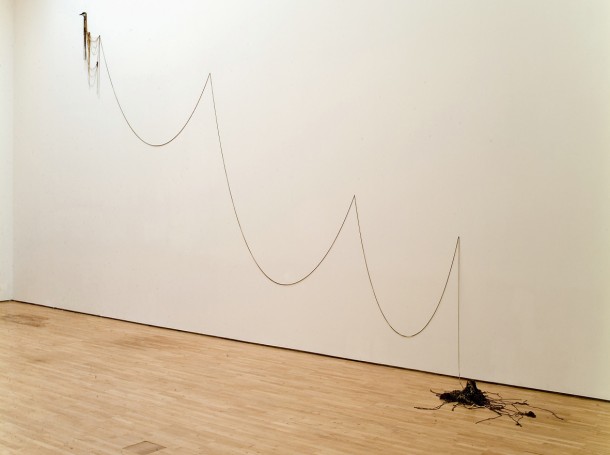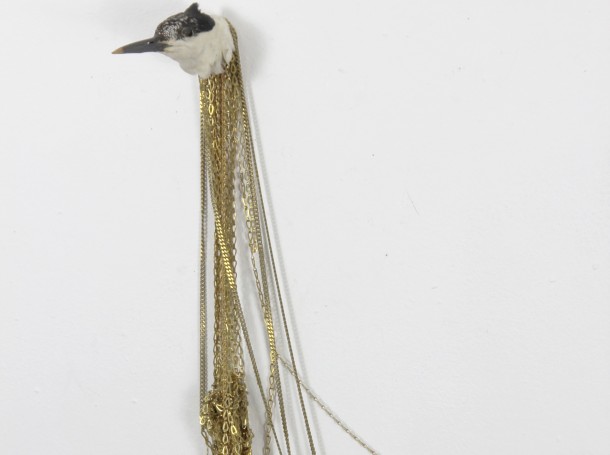Obra
Wing Beats
Leyenda
2006, Taxidermy and metallic chain
Dimensions variable
Cortesía Galeria Xippas
Artista
Por
Texto
—
Wing Beats (2006) is a sculpture by Ricardo Brey, indicative of the artist’s resourceful use of space and his sensitive use of materials, which conjure allusions between the cultural sphere and the natural world. Several strands of golden chain are piled on the floor and draped along the wall, rising up in large bounds to a taxidermied bird head that is fixed to a high point, beak facing out. This ethereal animistic assemblage was made at the same time as Brey’s encyclopedic work Universe (2006), a collection of over 1000 works on paper that associatively documents and elaborates on the natural world. In this landmark work, renderings of flora, fauna and minerals, sit alongside allusions to natural and even extra terrestrial forces such as the moon’s orbit.
Grounded in a literary impression, Wing Beats speaks of an 18th century text by Anton Josef Kirchweger, in which the Aurea Catena is decoded. This metaphor of Homer’s golden chain, serves as an alchemical guide to the cyclical relationship between heaven and earth. In this text, one of the principals that are put forth is that those who are the animate makers of the world must posses a sound understanding of the spiritual and scientific forces of nature. Without this knowledge, it is said the maker’s product can appear fruitless and unworthy. The ways of knowing that are contained within the successive platforms of understanding of the Aurea Catena are accessible to its followers once they solidly comprehend each initial level in their entirety. At this point the path to the next link in the trajectory become visible and accessible.
—
With an established career, originating in Cuba in the 70s and 80s, Brey came to wider attention with his participation in Documenta IX, 1992. Since this time he has resided in Europe. As a well-established artist who has moved decidedly from a periphery to a centre, while maintaining a critical and dedicated body of work, Brey conveys this sort of breadth of knowing how to operate in the world, ancient and contemporary, and beyond, with his allusions to the Aurea Catena in Winged Beats.
As another source of reference, Brey also sites Jazz as an influence for Wing Beats; ranging from the well-regarded Birdland Club in New York, to the music of John Coltrane. The obscure force of Jazz in this instance, is also a recognition that artists who stand in some form of ambiguity in relation to meaning in their work, could have access to ways of negotiating and communicating that actually speaks of rational and mathematical models. There is a mystery of understanding when we consider how this sort of position has fed into twentieth century avant-gardes and in modernity in general. The works are objects and events of representation and of knowledge, but also of cult and worship. Investigating, in a spirit of adventure, these archaic symbolism might tell us a secret history of modernity, a hidden language, a code or a mystical tradition.

